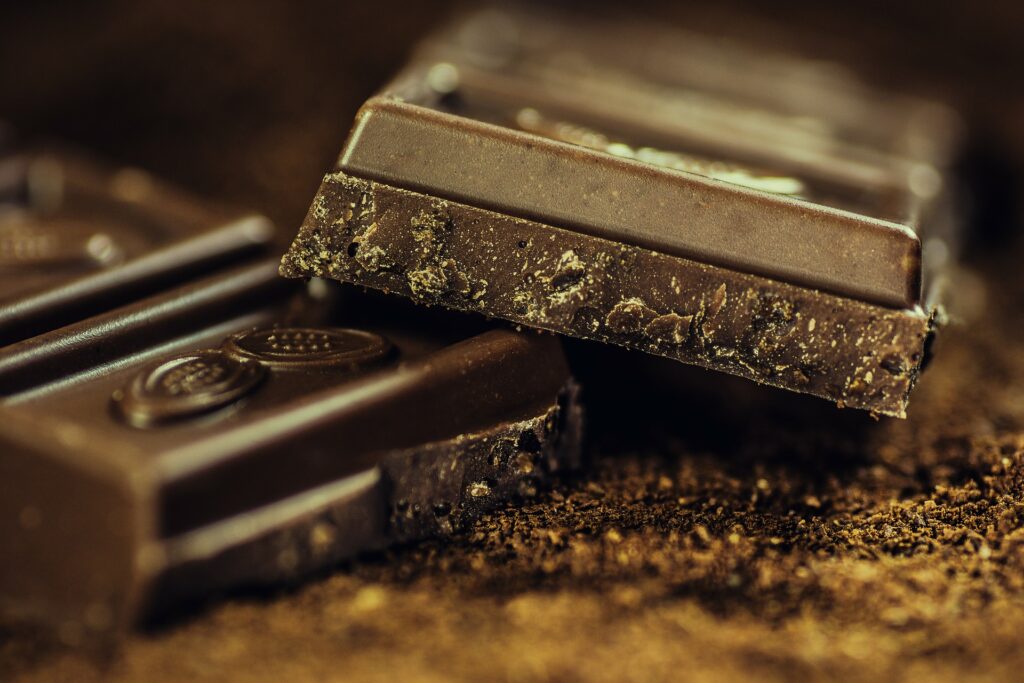
I bought lots of dark chocolate, my excuse being that I needed to try them to see if they would work for the triple chocolate buckwheat cookies I was baking. I ended up making the cookies with a little bit of each chocolate and they taste GREAT! I still have chocolate left over so I decided to do a tasting to find out which was my favorite chocolate. I thought you might want to join in! After all what could be better than an excuse to eat chocolate. And mine are all 70% or more cocoa so they are apparently all healthy for me too!
Food Exploring and Tasting
What you will need to do your own tasting (if you can’t eat chocolate, you could use anything to join in. I initially did this style of food tasting as a FoodCorps member using Triscuits):
- Several types (at least two) of dark chocolate or food of your choice
- Water for rinsing
- Apple slices as a palate refresher
- Plain saltine cracker as taste remover
- Paper plates or parchment paper or foil to put the samples on
- Secret codes to identify the sample (random numbers work great) (This is hard if you live alone like me)
- Pen and paper for notes and my handy dandy food tasting table (see below)
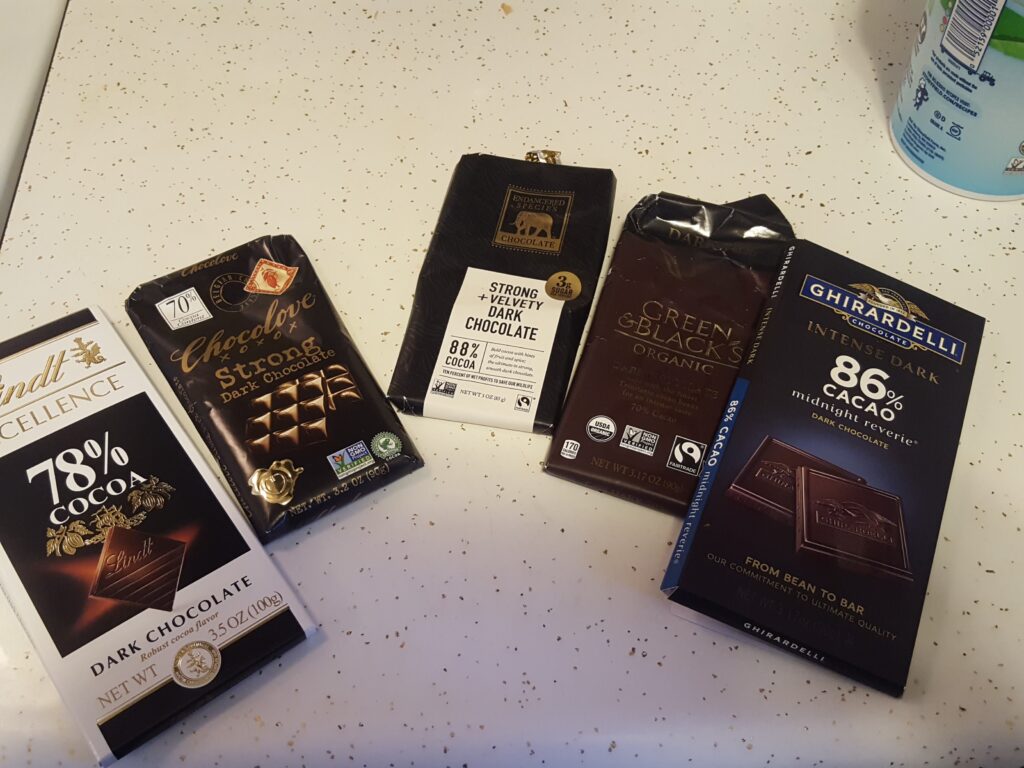
Set up
- On one plate per person divide plate (or parchment paper or foil) into the number of samples you have
- Write the secret codes on the outer edge
- Make sure chocolate has been at room temperature for 30 mins and not near a heat source!
- Break the chocolate into small pieces, try to keep at least two squares together if you can
- Place apples and crackers on to another plate
- Each taster should get a plate of chocolate to taste, a plate with apple slices and crackers and glass of water.
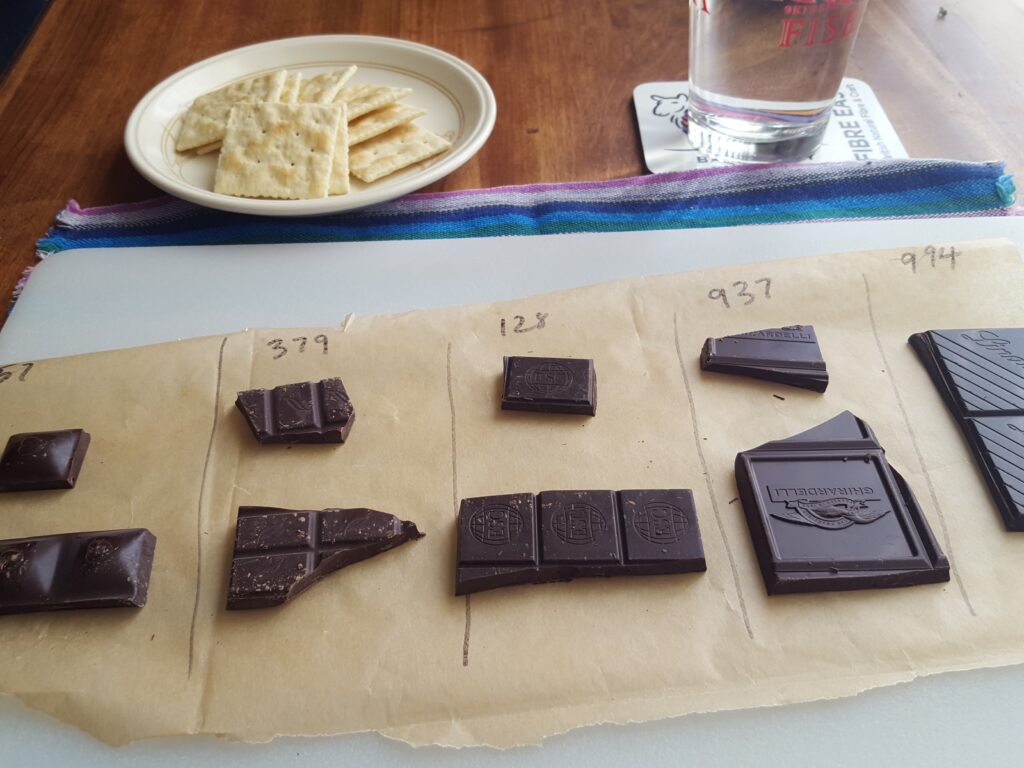
Tasting
We are going to use our senses to explore the chocolate. The first sense we use is our sight, so we will look at the chocolate, then we will smell, touch, feel, hear, taste the chocolate. How do we hear chocolate? More on that in a moment…
The important thing here is not to think about whether you “like” or “dislike” what you are tasting. We are exploring, not judging. And if there are several of you doing this together; don’t share your results until the end. Don’t, as food scientists say “Yuck someone else’s Yum”. If you think you might not like something, cut it up very small – less than ½ inch cubes are good – and then exploring it using your senses. Perhaps tasting it as a food explorer will make the food more interesting to taste.
For our chocolate tasting work your way through the following. After you’ve tasted one type of chocolate, eat some apple slices or a cracker and move onto the next. Feel free to drink water whenever you need it.
Appearance
Dark chocolate is dark brown! What else can we see when we look at our chocolate?
- What particular dark brown is your chocolate? Are they all the SAME dark brown?
- Is the chocolate shiny or glossy? Perhaps it is not shiny at all, we call that matt.
- Does it have a white bloom on it? This is common in chocolate that might have been stored at varying temperatures. It is fine to eat chocolate with bloom; it is the cocoa butter coming to the surface.
- What shape is your chocolate? Is it square or rectangular? Or perhaps it is round like coins?
- What else do you notice about your chocolate?
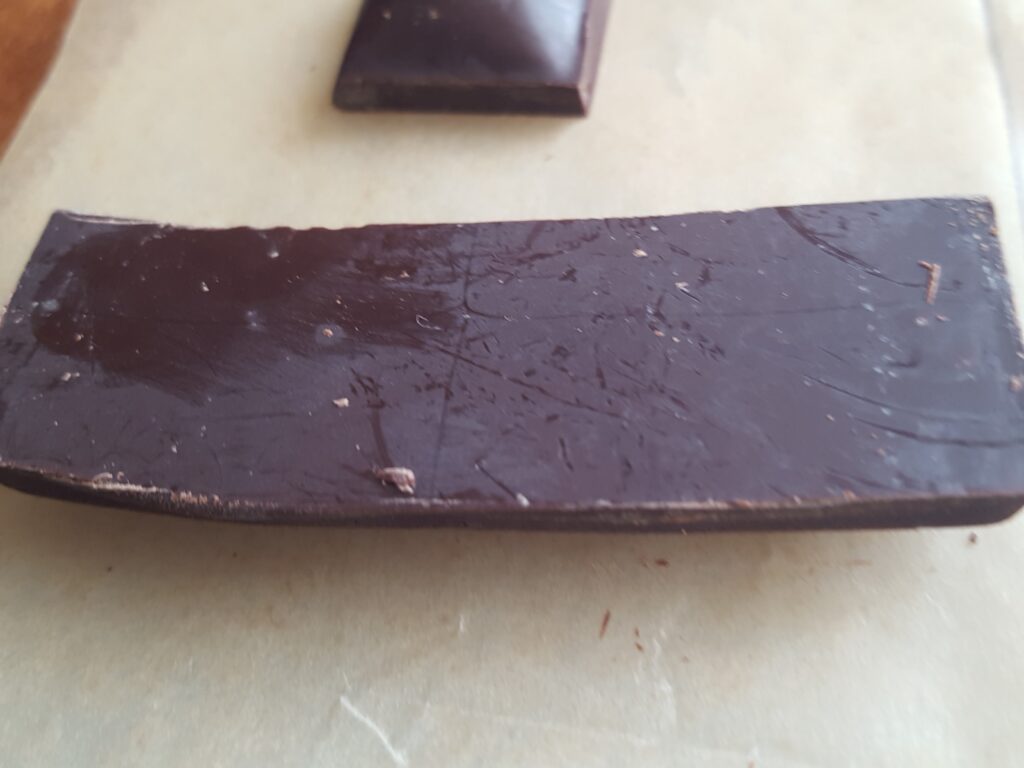
Touch and Sound 1
Just stroke your chocolate and notice what it feels like. Pick it up and notice how it feels. Now snap the squares apart. Was it easy to snap?
Did it make a clean snap sound or did it sound a bit floppy? We judge a lot of food from the sound they make when we break them.
Smell 1
Chocolate doesn’t have much of a smell until it melts. Try living near a chocolate factory sometime – it smells delicious. However, hold a piece up to your nose and see if you notice any smells. Does it smell fruity or nutty? Or perhaps it brings back a memory of another time you ate chocolate?
Texture and sound 2
Our teeth tell us a lot about the food we eat. Bite down on a piece of chocolate with your front teeth. Is it hard or soft? What sound do you hear when you make that bite or when you chew on a square of chocolate? What else do you notice about the chocolate? Is it gritty or smooth? Does it stick to your mouth. You will notice more texture if you let it melt on your tongue.
Try it! Take a piece of chocolate and let it melt on your tongue. What do you notice about the aroma of the chocolate now?
We notice more aromas in the chocolate when we let the chocolate melt in our mouths. This is because the aromas are bound up in the cocoa butter and are released into our nasal passages at the back of the mouth. This way of sensing aroma is known as retronasal. Orthonasal is when we smell directly from our noses.
Taste
We taste food in our mouths. We notice if food is sweet, salty, bitter, acidic and/or sour. We also notice if food is spicy and we notice it’s temperature. Some of us are better tasting some tastes than others. We are supertasters. What do you notice about the chocolate? Is it sour? Perhaps it is bitter – it is dark chocolate after all.
It is important NOT to get influenced by my suggestions here. Remember I don’t know what chocolate you are eating and I might be more sensitive to bitter tastes than you are.
Flavor
Flavor is a mixture of taste and smell. Our other senses also influence how we perceive the flavor of something too. Imagine eating a raw carrot that doesn’t make any sound? Do you think you could eat a fresh raw carrot without sound? If it didn’t make any sound what would you think?
Check back here on my blog and on my Food Crumb to see what I find when I analyze my chocolates. I am going to test them over several days because I want to enjoy them too. Too many tasting sessions at once will mean that I will forget the differences between them.
| Senses: | First Impressions | Score from 1 (low) to 5 (high) For example: Matt = 1; Glossy/shiny = 5 |
| Appearance | ||
| Force need to snap with hands | ||
| Sound of snap | ||
| Smell orthonasal (from the nose) | ||
| Force needed for bite | ||
| Texture on melting on tongue | ||
| Retronasal smell (within the mouth) | ||
| Taste | ||
| Overall Flavor |
Please share in the comments your experience of being a food explorer. What did you do differently? What did you learn about your food while exploring?

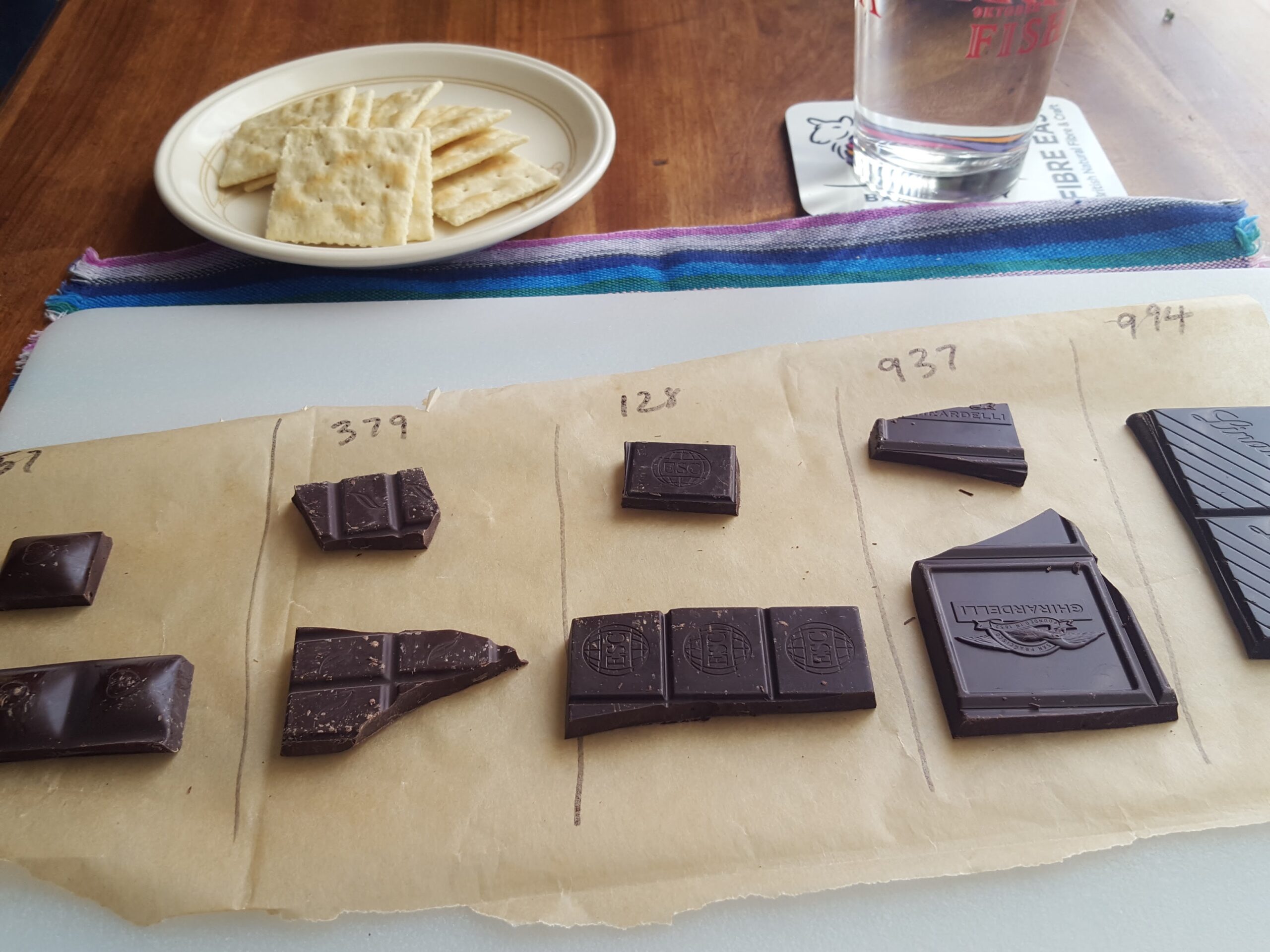
Now I am craving chocolate! Yum!